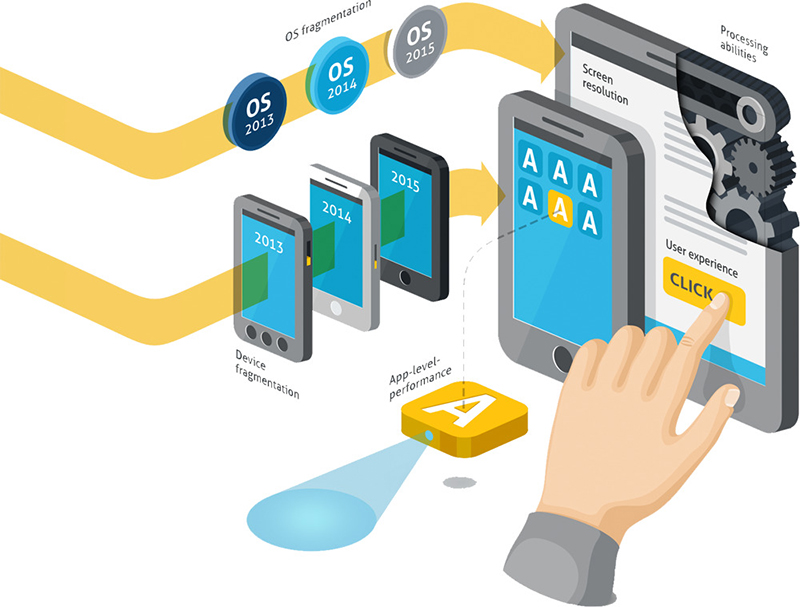Enhancing Website Accessibility for Better User Experience
In an economy where reputations are built and brought down by word of mouth, online reviews play an important role in determining public perception of your business. Ensuring your website is accessible not only benefits users with disabilities but also contributes significantly to your online reputation. One effective way to achieve this is by utilizing an accessibility checker to detect and resolve potential issues. In this post, we'll delve into the crucial relationship between website accessibility and improved reviews, highlighting the role of accessibility checkers in this process.

1. Understanding Accessibility
Website accessibility refers to the practice of designing and developing websites that can be used and understood by everyone, including individuals with disabilities. Disabilities encompass a wide range of conditions, such as visual, auditory, motor, and cognitive impairments. An accessible website aims to provide an inclusive online experience, ensuring that no one is left behind. Common accessibility accommodations include keyboard navigation, support for screen readers and other assistive technologies, and accessible website themes.
2. Why Accessibility Matters
Now that we’ve discussed accessibility and different accommodations for people with disabilities, we can now discuss why accessibility matters not just to people with disabilities, but to everyone who spends their time online.
Wider reach: When your website is accessible, you open the door to a broader audience. Millions of people worldwide have disabilities, and they are potential customers, readers, or users. By making your website accessible, you tap into this untapped market and expand your potential audience.
Legal compliance: Many countries have laws and regulations in place that require websites to be accessible, such as the Americans with Disabilities Act (ADA) or EN 301 549. Non-compliance can result in legal consequences and damage to your brand's reputation.
Enhanced SEO: Accessibility features like descriptive image alt text and semantic HTML markup not only help screen readers but also boost your website's search engine optimization. This means improved visibility and potentially more traffic. It can also result in better reviews coming from users who are able to find the information they need more easily.
Positive user experience: An accessible website is more user-friendly for everyone. Elements like clear navigation, readable fonts, and easy-to-use forms benefit all users, not just those with disabilities. This can help increase website traffic and generate more positive feedback from users who are happy with the experience.
3. The Role of Accessibility Checkers
Accessibility checkers are invaluable tools that can help you evaluate and improve your website's accessibility. These tools automatically scan your website for accessibility issues, highlighting areas that need attention. Here's how they contribute to enhanced website accessibility and, consequently, better reviews:
3.1 Identify issues early
Accessibility checkers catch accessibility issues in the early stages of development. This is crucial because addressing these issues at the outset is more cost-effective and less time-consuming than fixing them later. By spotting and rectifying problems early, you ensure a smoother user experience from the start, which can lead to positive reviews.
3.2 Ensure compliance
Many accessibility checkers are designed to check for compliance with accessibility standards such as the Web Content Accessibility Guidelines (WCAG). Meeting these standards is not only essential for inclusivity but also for legal compliance. Avoiding legal issues associated with inaccessible websites can safeguard your reputation and prevent negative reviews.
3.3 Improve usability
Accessibility checkers provide suggestions and recommendations for improving usability. This includes making your website more navigable, enhancing readability, and ensuring multimedia content is accessible to all users. A website that is easy to use is more likely to receive positive feedback.
3.4 Enhance brand image
When users perceive your brand as one that prioritizes accessibility, it creates a positive image. This goodwill can translate into better online reviews, as users are more likely to have a favorable opinion of your website and services.
3.5 Encourage user engagement
An accessible website encourages user engagement. People with disabilities are more likely to interact with your content if it's accessible to them. This not only boosts your website's user engagement metrics but can also result in positive reviews from satisfied users.
4. Generating Better Reviews Through Accessibility
Website accessibility is not just a matter of compliance; it's a pathway to improved reviews and a better online reputation. Utilizing accessibility checkers can significantly aid in identifying and rectifying issues, ensuring compliance, enhancing usability, and ultimately, attracting positive user feedback. As the digital landscape evolves, embracing accessibility is not only the right thing to do but also a strategic move for success in the digital realm. So, invest in accessibility checkers, make your website inclusive, and watch your reviews soar as you welcome a wider and more diverse audience to your online presence.








Leave a Reply
Your e-mail address will not be published. Required fields are marked *